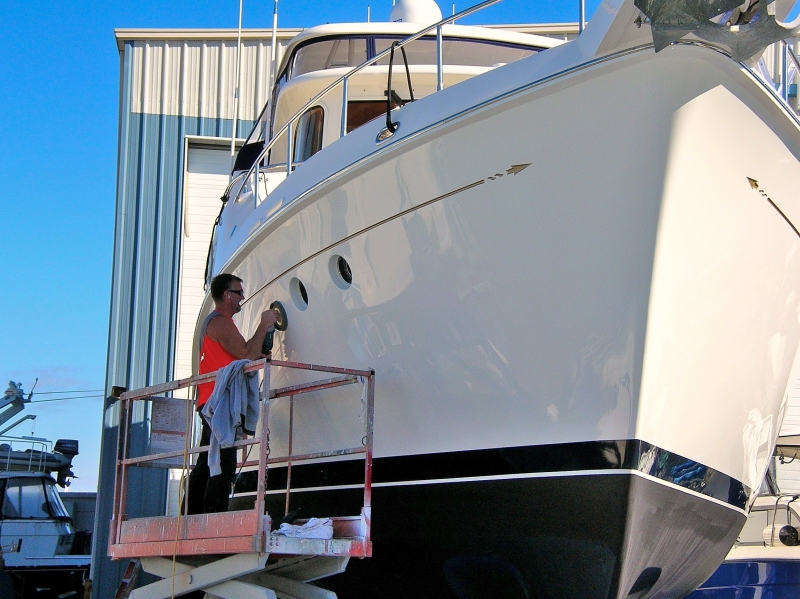Spring Cleaning and Polishing
3rd March 2023
The annual ritual of washing and polishing the boat before spring use can be tedious. It doesn’t need to be though. There are ways to make the effort more effective and to avoid mistakes that will create more work.
Even though your boat may have been protected by a boat house or by shrink-wrap during the winter there’s no guarantee that it will be clean in the spring when you are ready to use it. Proper ventilation of the shrink-wrap means dust and dirt can enter along with the circulating air. Conduct a thorough wash-down and dry the boat with a soft cloth or a chamois. Drying prevents spots on the gel coat or the paint and provides an opportunity to examine the condition of the surface.
Polishing the gelcoat with a rubbing compound can restore parts of it that have become oxidized or chalky looking during layup. You can polish the gelcoat by hand, but the process goes much quicker and easier with an electric orbital polisher. If the surface is badly oxidized the task should be completed by a professional. The combination of abrasives and a powerful machine can easily cause damage to the finish if it’s not done properly.

An orbital polisher makes the job easier
When the rubbing compound is first applied it works as an abrasive that removes dirt and oxidization from the surface. It then breaks down into a finer abrasive, so at the final stage, it polishes the surface to a high gloss. Applying more compound without allowing it to break down just wears away the gel coat surface without producing a glossy shine.
The use of a good cleaner wax and then a Teflon polish makes for an excellent final finish. A paste wax may provide 20 to 30 percent better protection than liquid, but the increased time and effort required to apply and remove it has not proven to be worthwhile. A good cleaner wax is easier to apply and results in an impressive shine. If you have doubts of a Teflon product to resist dirt and grime, try to get a piece of masking tape to stick to a treated surface.
Most boats will require at least two reapplications of wax or polish during a season – this is especially true of flat surfaces above the waterline that receive lots of direct sunlight which oxidizes sooner and will benefit from more attention than the sides of the hull and other vertical or shaded surfaces. Also, don’t forget to wax all exterior metal hardware since most metal polishes contain no wax protection.
When it comes to daily cleaning during the season, the stronger the soap, the more protection it will remove during washing. Recommend using a mild Eco-friendly soap developed for boats. It will not eliminate the need for mid-season waxing, but it may slow down the loss of protection. When a strong detergent is required to remove diesel exhaust haze for example, remember to reapply protection as soon as the area has dried.
Boats that are finished with Awlgrip or other paint-like products should not be compounded or treated with any abrasive product. These coatings must be maintained in strict accordance with the manufactures’ instructions.
These quick and easy tips will hopefully make spring cleaning that much easier! If you found this post useful, here is some more information to get your boat ready to cruise as spring approaches.


